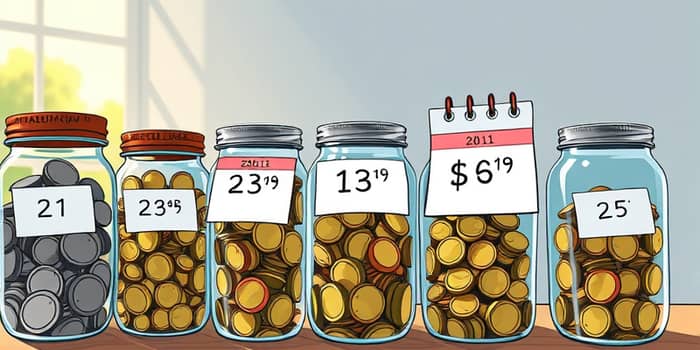
Financial stability isn’t a matter of luck; it’s the result of proactive, disciplined planning. By matching your savings to upcoming, predictable bills and obligations, you eliminate last-minute scrambles, reduce stress, and safeguard your cash flow.
Time-sensitive expenses are costs that must be paid at specific intervals. They often cannot be postponed without penalty or disruption. Examples include rent or mortgage payments, insurance premiums, annual subscriptions, property taxes, and scheduled loan repayments.
In a business context, expenses tied directly to hours worked or usage—such as hourly staff wages or client billings—also follow a time-sensitive pattern. Failing to reserve funds in advance can lead to shortfalls when payroll or vendor invoices arrive.
The foundation of effective saving is a comprehensive financial plan. Begin by listing all fixed, variable, and incidental expenses. Track every source of income and every outflow across a typical month. This exercise reveals your true cash flow and highlights where to allocate funds.
Once you know your obligations, decide on percentages of each paycheck to funnel into dedicated accounts. Automating contributions builds momentum and prevents the temptation to spend these reserves. Harness technology—banking apps or automated transfers—to automate savings and transfers from checking into earmarked accounts immediately.
Not all expenses carry the same level of urgency. Group them by their nature and timing to understand which require immediate attention and which can be managed with more flexibility.
By understanding how each category behaves over time, you can prioritize which savings buckets to fill first and forecast upcoming pressures on your budget.
Individuals often juggle a mix of monthly, quarterly, and annual bills. To stay ahead, build separate “sinking funds” for each major payment. This practice smooths large outlays over many months and keeps you from raiding emergency reserves.
Maintaining a liquid savings buffer equivalent to three to six months of essential bills ensures you’re covered if income fluctuates or unexpected costs arise.
Businesses thrive when income and expenses align. Structure client billing cycles so that large invoices arrive before major payouts are due. For example, time your project milestones or recurring service invoices to clear just ahead of payroll.
Establish a petty cash or operating float for incidental and variable costs. Set strict monthly limits and reconcile receipts regularly to prevent budget creep. This ensures that small but frequent outflows don’t erode your working capital.
Differentiating between routine, predictable expenses and one-off investments allows for more accurate forecasting. By maintaining predictable financial stability, you can reinvest excess cash in growth opportunities rather than scrambling to cover bills.
Even disciplined planners can stumble. Watch for these traps and implement safeguards:
Combat these risks by regularly revisiting your budget, adjusting savings targets, and indexing future contributions to expected rate hikes.
Leveraging technology can turn diligence into habit. Many banking platforms allow you to label accounts and schedule transfers. Personal finance apps provide visual dashboards and alerts to keep you on track.
For larger, less frequent bills, consider parking funds in high-yield savings accounts or short-term certificates of deposit. This approach lets your money earn extra interest while it awaits disbursement.
Consider Jane, who faces a $2,400 annual homeowners association fee every January. By dividing the total by twelve, she deposits $200 into a designated account each month, eliminating any December scramble.
On the business side, a consulting firm bills clients for hours worked and schedules invoices to arrive mid-month, just before salaried payroll. This synchronization ensures that staff compensation is always covered by incoming revenue.
Matching savings to time-sensitive expenses is not merely a budgeting tactic; it’s a mindset shift toward proactive financial stewardship. By carving out funds well in advance, you avoid high-interest credit, late fees, and the anxiety of unexpected bills.
Embrace the discipline of allocating money for predictable obligations. The result is a more resilient personal or corporate balance sheet, a reduction in financial stress, and the freedom to focus on growth rather than on covering immediate costs.
References













